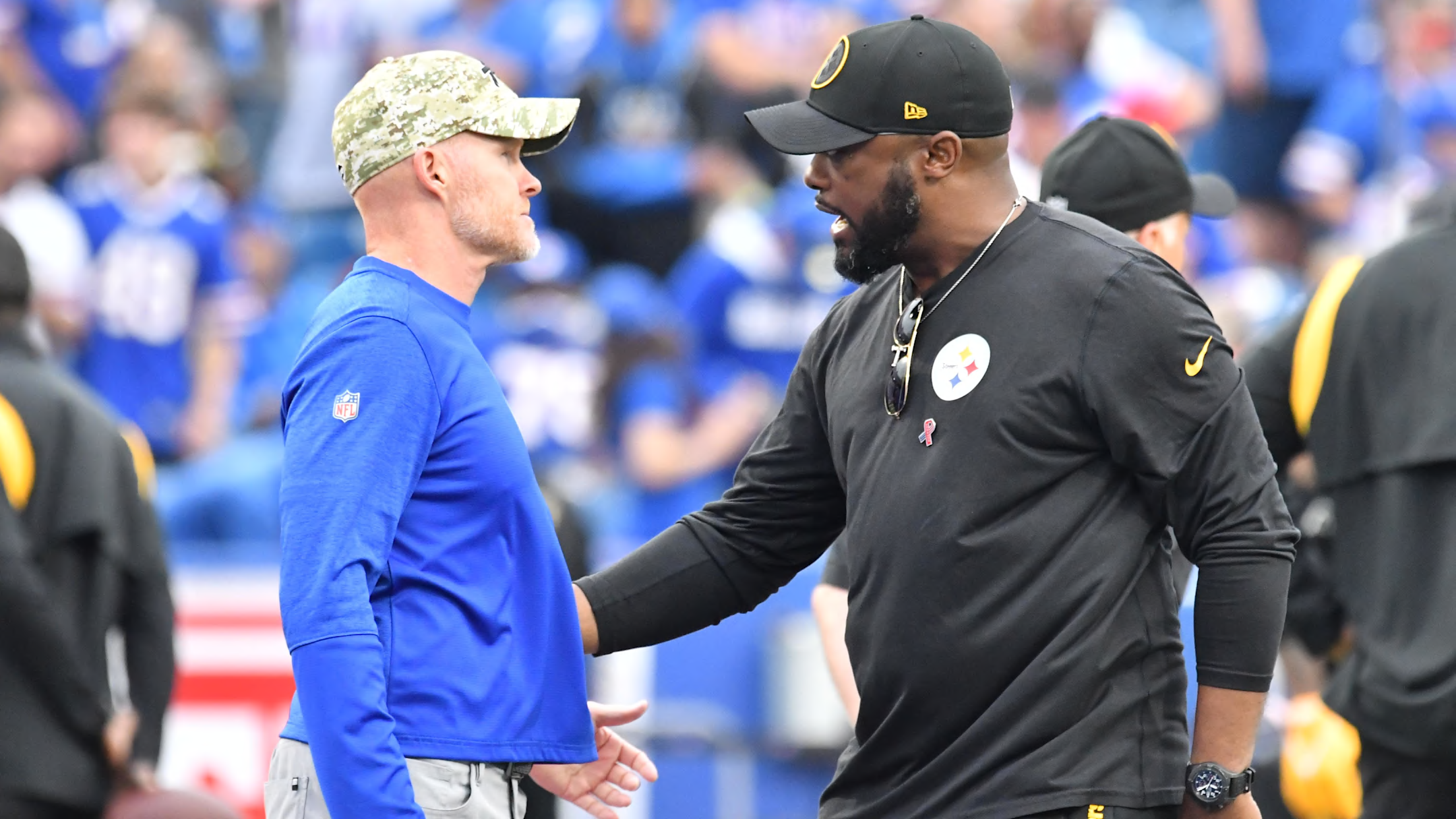
History teaches us a great many things. In relation to this post, history has taught us that procrastination from the Toronto Maple Leafs when it comes to contract extensions rarely works out. There is the Nylander contract that shows how things can get a lot more expensive once the season starts and the Leafs went from a hard no mentality on a $10M AAV to inking a long term deal at $11.5M AAV.
You can likely lump Matthew Knies into this type of situation as well. You can also look at players like Zach Hyman, who could have been signed at budget friendly numbers prior to the season before waiting to see how it played or you could just look at things from the perspective of where the writing is on the wall, you know the player isn’t part of the long term plans and recoup an asset before they leave for nothing. The Dubas years provide many examples of own rentals blowing up in the Leafs’ faces.
Of course, there are examples, like John Tavares, that show the wait and see approach isn’t terrible either. Honestly, even with Knies, the Leafs didn’t get gouged by any means and they are now paying for the player they have rather than gambling on potential.
The Leafs have six players that are eligible for contract extensions this summer. None of them at the Nylander, Knies, Tavares, or Hyman levels, but all are noteworthy in their own ways. When looking at their projected contracts by AFP Analytics, it’s worth exploring what is the best approach for the Leafs with each of these players.
Anthony Stolarz projected 2 years @ $4,267,466.67
The better statistical half of the Leafs tandem will certainly be the priority of this group and the projected salary seems pretty reasonable as does the term. That doesn’t mean that the player is looking to start from that perspective or ready to negotiate down to that.
Stolarz is in a position where he put up great numbers when he played last season and if we were talking about him as a 50-game netminder instead of a 34-game one, we’d likely be talking about how he would have received some Vezina votes and there is no way his projected AAV would be that low.
His 34-games last season was an NHL career high but including his AHL career he has reached 47 games before. Stolarz betting on himself to get up into the 40+ start range would likely mean a bigger payday for him either with the Leafs or elsewhere, so it’s possible he takes a run at it.
The risk to the Stolarz contract is that Woll establishes himself as the 1A. Woll is younger and still figuring things out. If Stolarz ends up taking a backseat this year it could impact his money.
The reality is that both the club and the goaltender are probably most comfortable playing the waiting game here and while it will bite at least one side in the ass, the Leafs would likely be comfortable paying a little more if Stolarz can add volume of starts to his impressive play.
Matias Maccelli: 1 year @ $4.1M or 3 years @ 4,349,800
Maccelli is either the player with the highest projected contract or second highest depending on whether he is looking for a single or multi-year deal according to AFP.
From a Leafs perspective, playing the waiting game on a forward that only put up 18 points last season is reasonable and if there isn’t a fit on the Leafs for him, those projected numbers would slide a lot or there would simply be a lack of a qualifying offer.
There would have to be a pretty big haircut on that cap hit for the Leafs to want to act now and honestly it feels like if Maccelli locked in at a low number with term that would truly be the opposite of betting on himself and raise some concerns about whether the player even believes he can be a 57-point player again.
When both sides better understand each other there will likely at least be good reason for the Leafs to get something done in season while Maccelli would probably be best off pushing things right up to the brink of arbitration.
Scott Laughton: 3 years @ $3,999,800
The projected contract for Scott Laughton is one that shows I have no idea how AFP calculates their numbers. I’d imagine Laughton’s attributes they look at are close enough what is needed for this number and centres rightfully come at a premium, but given that Laughton’s time as a Leaf show him as a fourth line centre, not the 2nd/3rd tweener that he’s been on worse Philadelphia teams, that is far too much for far too long, even if the salary cap will be increasing to numbers that make us talk about money a lot less. (At least in the short term, player contracts will eventually catch up to the new cap environment.)
Laughton is another one that the Leafs need to see what they have and Laughton needs to prove what he is.
You could make a case for Brad Treliving showing up with a carbon copy of the deal he made with David Kampf a few years back and saying this is what we’ll do for a fourth line centre in this city but you could also make a case for how few players test free agency and Laughton will land on his feet even if the initial projected contract seems ridiculously high.
Bobby McMann: 2 years @ $2,963,388.24
The Leafs don’t use Bobby McMann like a 20 goal scorer but two seasons of strong NHL results show that’s what he is. He also hits, carries the puck decently enough, has a smart shot, and you don’t hate him in the defensive zone. The playoffs weren’t ideal for him, but the reality is that when you throw in his size, he’s an absolute steal for the Leafs at $1.35M and his next contract being around $3M seems reasonable as well.
That said, there doesn’t seem to be complete trust from Craig Berube in Bobby McMann and when the Leafs lineup was healthy last year it seemed that there was a strong enough to push McMann as far down the lineup card as he could go. McMann did have two 11 game goalless streaks and that last one ran into a 13 game goalless streak in the playoffs, so technically he hasn’t scored in 24 games.
There might be some concern that the bubble has burst on McMann’s offence in the NHL, but given that his size is still there and he still is the same guy that put up 20 goals, a full blown panic isn’t warranted yet. It does, however, potentially present the Leafs with their last best opportunity to either cash out on McMann before he gets more expensive or to re-sign him at the lowest point of his NHL career to a more manageable cap hit going forward.
While the “own rental” concept is a poor one, the Leafs would at least be wise to start the year with McMann while other questions in the forward group get answered. Will Robertson be back? Who of Domi, Maccelli, etc. click in the top six? What does Toronto have in Scott Laughton and Dakota Joshua?
And if McMann looks to be back on track as well, acting quick on the projected number from AFP might be a good call as well.
Calle Jarnkrok: 1 year @ $2.158M
There’s not much of a case for signing Calle Jarnkrok, especially where the projected number includes the most marginal of raises. If Jarnkrok is still a Leaf next season it is because he’s embraced a depth role and coming in a deep discount. Or he’s proven everyone wrong, stayed healthy, and found some more offence. That’s not a bad outcome either.
What is interesting about this projection is that it at least supports that Jarnkrok’s contract isn’t a burdensome one to move, especially now that the signing bonus has been paid out and only $775k of salary is owed for the year. With Jarnkrok suspected to be one of the odd men out on the roster, it seems like it shouldn’t be too onerous to find a new team for him.
Henry Thrun: 2 years @ $1,764,533.33
One of the newest Leafs is one of the more intriguing options here.
It seems like the Leafs could lock in very easily on Thrun at a good price for a couple of seasons and commit to running him through their player development program and give him less of a trial by fire run at the NHL in contrast to his time in San Jose.
Or it could be that Thrun is the buriable salary that the Leafs had to take back in order to move Reaves and they aren’t interested in what Thrun can do besides add to Marlies depth and if he’s more than that, he’s a found wallet.
There’s a lot of grey area in between being completely sold on him and being in a rush to put him on waivers, but wherever that truth lands, at this point there might be a benefit for Thrun in the security of an NHL pay cheque and for the Leafs the benefit of getting the best possible price on Thrun by interesting in Thrun before they know if he needed a change of scenery to thrive or just isn’t an NHLer.
With all of these players the risk is a lot lower for the Leafs to wait than ever before. With a projected $24,000,000 of cap space to work with heading into the 2026-27 season, Toronto can take their time on all of these players, decide who they truly want to bring back and still have enough to be significant players in free agency.
The bigger picture is the asset management perspective and with the Leafs having limited draft capital to refill their prospect pool or to use as currency at the trade deadline, using projections like these to determine who likely won’t have a future as a Maple Leaf and cashing out on them when their value is still there might be right call.
-1751864570-q80.webp)


